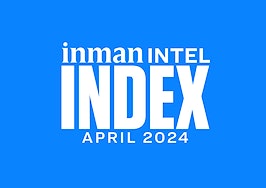- Once information is out of the bottle, it is like a genie; it is not going back in.
- With the Zestimate, information quickly became viewed as a right, not a privilege.
- Expect new massive companies that build on the foundation of the early content pioneers.
I’ve spent much of my career at the intersection of real estate and technology. I’ve done this partially because I simply love the “tangibility” of the sector but also because the real estate industry, in general, has historically been slow to innovate and embrace new models and technologies.
My view has always been that within this dynamic lies opportunity for those brave enough to venture in. I watched as companies such as Trulia and Zillow created massive companies by embracing the internet to democratize information for the residential sector.
Once information is out of the bottle, it is like a genie; it is not going back in. The proliferation of content marks the first wave of innovation in the sector. Now, we are seeing the emergence of models taking this a step further by leveraging technology and improved information flow to facilitate transactions in different ways. Let me briefly walk you through the evolution as I see it and what I see coming next.
Phase I: Content emerges
I remember sitting down with Pete Flint and Sami Inkinen in 2004 when they were still at the Stanford Graduate School of Business. They saw an opportunity to bring the off-line business of real estate classified advertising online in a way that focused on the customer experience. Back then it was called RealWide — seriously; ask Flint. They eventually changed it to Trulia, which was a good call.
At the time, I was CFO of ZipRealty, which we took public in the fall of that year as perhaps the first true internet-enabled residential brokerage in the U.S. It’s hard to imagine a time when we couldn’t all look on our phones and see every house for sale, but back then that was certainly not the case. Back then brokerages were the gatekeepers of listing info, and all roads went through them.
In those days, we were not very popular in some circles for trying to democratize information and put it in the hands of consumers in an efficient way. While we were a brokerage simply looking to provide rich content to our clients digitally and create a more efficient sales process and better customer experience, Flint and Inkinen had a much bolder vision to create a portal that anyone could access to display home listings all over the country.
I loved the idea and their enthusiasm, but it seemed like a tough putt. I concluded that the scale required to make that model work was so large, and the obstacles to getting there so difficult, that it would almost certainly not work.
Obviously, I was dead wrong. Flint and Inkinen didn’t realize it at the time, but they had started phase I of innovation in the residential real estate sector, which hadn’t changed much since the invention of the Model T.
Not long after that, Rich Barton and Lloyd Frink at Zillow embarked on a similar journey to democratize information on the $20 trillion-plus U.S. housing market. They were even bolder in their vision; they hired armies of data scientists to estimate the values of every home in America to make them visible to everyone.
Zestimates became the topic du jour at dinner parties. Voyeurism meets real estate. No longer were home values secret. Information quickly became viewed as a right, not a privilege. Power to the people!
While phase I of real estate technology innovation has broken down many of the barriers to information, it has not yet led to a wholesale transformation of the way real estate is transacted nor brought down costs or improved the transaction experience in a meaningful way for consumers. As in many industries, content preceded commerce.
Phase II: Content enables commerce
Recently, a new crop of online real estate platforms has emerged that cater to investors in the residential sector. With $2 trillion in assets, the single-family rental segment represents about 10 percent of the U.S. housing stock.
However, the existing MLS ecosystem, which has naturally evolved principally to cater to the 90 percent of the owner-occupied single-family housing stock, is generally not well-suited to selling investment homes where investors are more concerned about the size of the yield than the size of the yard. Enter many firms looking to introduce better mousetraps.
HomeUnion and Investability are both models that cater to real estate investors seeking to purchase and own single-family homes as investment properties. Although they are arguably not true two-sided marketplaces with network effects, they scour the supply offered on local MLSs and provide rich data and analytical overlays to help investors identify and purchase homes that could be good investment properties.
They do this by combing the MLS listings and using estimated rents, renovation costs and expense ratios to identify which homes are likely to be attractive candidates; then they help facilitate the transaction.
Although not necessarily lowering costs, these models greatly simplify the search and purchase process and create a powerful lens through which to identify and make investments in markets around the country.
Additionally, there are two platforms focused on the real estate sector that do have the elements of true two-sided marketplaces and attract buyers and sellers to a marketplace of proprietary inventory that they aggregate and market: Ten-X (formerly known as Auction.com) and my company, Roofstock.
Ten-X focuses on all sorts of property types and has sold billions of dollars in real estate over the past few years, primarily distressed assets in an auction format, though it has announced intentions of growing their non-distressed business.
It has done a great job of taking a business that was traditionally done in an off-line, analog way and moved it online. With increased scale have emerged network effects inherent in all good marketplaces that create better liquidity for all participants. It recently announced the creation of a new residential division, which it says will focus on bank-owned and foreclosed properties.
Although the focus of Ten-X is primarily on distressed inventory, Roofstock focuses on the opposite end of the risk spectrum by providing a curated marketplace of renovated, leased, cash flowing homes for sale with tenants in place.
Investors can purchase them more like a stock or a bond on the company’s website, and Roofstock stays on to provide asset management oversight to optimize performance.
Diligence is available up front to review before purchasing, and savings are passed along to buyers in the form of listing prices that reflect this savings as well as the condition of the homes. With much of the work done up front, closings can be completed in days, not the typical weeks or months associated with traditional processes.
Each of these models is different but contributes to a developing ecosystem catering to the more than 4 million investors who currently own single-family rental homes and the many millions more who could do so given these new models that make the asset class more accessible.
As awareness and adoption of these new types of platforms grow, so does the inevitability of a shifting of market share from old school to new school players that leverage technology and automated business processes to bring down costs and improve the customer experience.
It’s still early days, and there will certainly be some bumps along the road, but expect to see some massive companies created over the next decade as firms figure out how to build on the foundation of the early content pioneers with innovative and compelling transactional models.
Gary Beasley is CEO of Roofstock. You can follow him on Twitter or LinkedIn.












